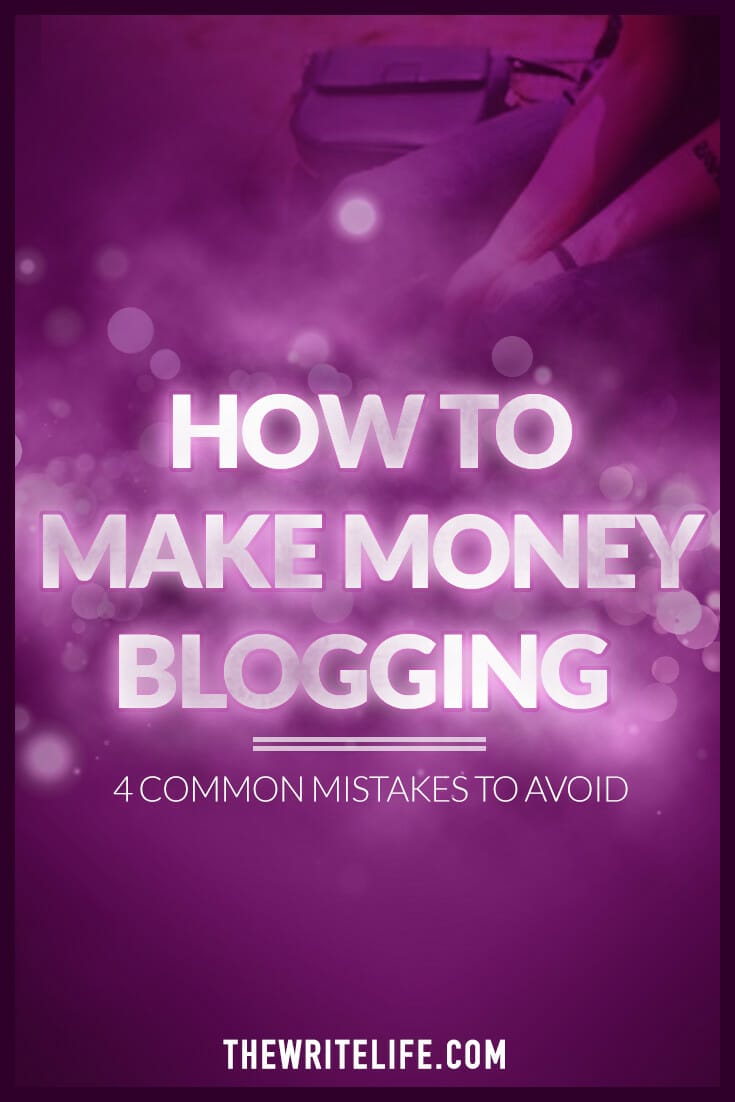What’s the only thing better than dreaming about a profitable blog?
Actually having a profitable blog.
The question is how to make that happen.
I was the hardest working, dirt-poor blogger out there. I hustled. I put in tons of hours. But I still didn’t make any money with my blog site.
I thought I wasn’t cut out to run my own gig. I assumed my ideas were bad. I wondered if the economy just wasn’t ready for me. Maybe I just needed to get motivated.
To tell you the truth, I secretly wished that somebody would have yelled, “STOP! You’re doing it wrong. Here’s what’ll actually work…”
Looking back, I can see clues that told me I wasn’t getting results. But at the time, I didn’t recognize the clues at all.
It wasn’t my motivation that needed a facelift.
My monetization strategy needed a complete overhaul.
And guess what?
After I connected a few dots, things started turning around for me. My blog finally started making some money.
If you’re not turning a profit with your blog, don’t give up yet — you’re about to connect a few dots of your own.
I know you’ll get it because I started out as a newbie beginner who didn’t turn a profit for nearly five years. But I managed to write a book and build a tidy income through sales on my website.
Here are a few signs that yell STOP! to warn you that it’s time to wake up and monetize the right way.
1. There’s no evidence you’re open for business
When I got serious about monetizing, I knew it was important to build my lead list, grow my traffic, and click with my followers. But I got comfortable giving myself permission to delay selling.
Worse yet, my audience got comfortable with me not selling to them.
I told myself that I was on the path to monetizing. But once I had the subscribers and the traffic and the relationships, I didn’t have a clue what to do with them.
The bottom line is pretty simple: you only monetize once you sell something. Creating your art and building a following are essential. But you won’t make money until you ask people to buy from you.
As a beginner, monetizing is all about making your first sale, not your first million. And you can make your first sale long before you get 10,000 visitors a day.
So when’s the best time to sell? Start early.
Not on your first day. Give yourself some time to build your website, list, and traffic.
But ease in after you’ve got a few hundred followers. Don’t wait for a few thousand.
Even though you’re a beginner, put something out there for purchase. Open up shop and start monetizing like a business.
2. You’re scraping your savings to take one more class
I had a client who wondered if $10,000 was too much to spend on a certification course. Before she even started coaching, she considered spending nearly the price of a car on a how-to course.
If you’re trying to make money with your blog by breaking your own bank, stop where you are and change course.
It’s easy to get seduced by the guarantee of a quick payoff. But you don’t need to know how to make six figures until you’ve learned how to make your first $1000.
Investing in expensive courses may be feasible at some point. But when you’re starting out, invest your time in what will get you paid. Stay real about where your money’s going.

3. You’re hiding at the back of the class with your hand up
Ever indulge in that sparkling fantasy where the only thing your blog needs is to get discovered by the right celebrity who will promote you into fame and fortune? We’ve all been there, right?
It’s like sitting in the back of the class, throwing up your hand and begging, “Pick me! Pick me!”
This one took me a while to finally get some perspective on. After years of kissing up to untouchable bloggers, I realized that there’s a difference between networking and leeching.
Networking involves showing up ready to serve. Leeching means you’re just waiting around for favors.
If your monetization strategy consists of hanging around influencers waiting for your big break, stop. You’re only keeping yourself stuck at the poverty line, looking for approval.
Even as a beginner, you’re capable of creating your own financial freedom with your blog. You don’t need others to greenlight you for success.
Network with the intent to give more than you get. Focus on delivering value that your audience wants to pay for.
4. You’re building your platform on a rented lot
I’ve got a dark little secret. I used to compare my social media followers with Michael Hyatt’s.
I was convinced that if only I posted multiple times a day and used all the right hashtags that I could get a few hundred thousand followers too. Not to mention all the likes and shares that would prove my content was spectacular.
I fell short of matching Hyatt’s social following as an acclaimed author and speaker. But more importantly, I failed to foresee upcoming trends that would change my relationship with social media completely.
When Twitter decided to change accessibility of tweet counts, bloggers saw a dramatic dip in their social proof. Overnight, I lost 50 percent of my share counts. Why did Twitter stop providing access to tweet counts? The short answer is because it’s their platform. Because they can.
If the bulk of your monetizing efforts are on social media, you’re building your business on a rented lot that you don’t even pay for. The owners always get to make the rules. Not the tenants.
Monetize on your own lot. Your website, your content, all the email addresses your leads have given you — it’s all yours. That’s where you get to make the rules for how you want to monetize.
Start building your income
It’s no secret that once you start to monetize your blog, some strategies work better than others.
Think hard about solutions that will work for you. Nobody wants to waste time and lose money on the way to growing your income.
You could always keep doing what you’re used to and wait for prosperity to find you. Or, you could use the solutions that bring you results and finally make your first sale.
What approach made the biggest difference for you when you first set out to monetize?







